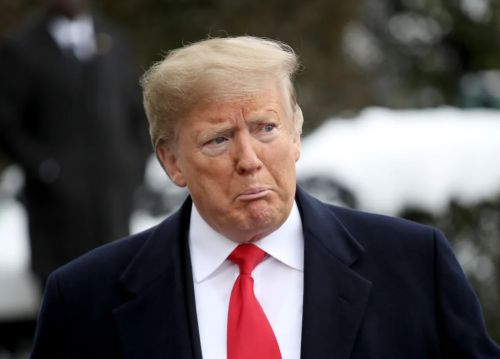

For our republic already fragile, the implications are sobering. The principle that voters choose their leaders is being tested against a reality in which leaders choose the voters.

By Matthew A. McIntosh
Public Historian
Brewminate
A Presidency under Strain
Donald Trump’s return to the White House in January 2025 was historic, but his tenure has been anything but triumphant. Approval ratings across multiple polls show him languishing below 40 percent, a level of unpopularity that casts a long shadow over his governing agenda. Gallup and Quinnipiac surveys from the summer indicate that a majority of Americans disapprove of his handling of both domestic policy and foreign affairs. Among independent voters, the gap is even wider, with nearly two thirds reporting dissatisfaction.
Such numbers are not merely political trivia. They form the backdrop against which Trump is making choices about the future. Presidents with deep reservoirs of public support can afford to leave elections to the uncertain verdict of the electorate. Leaders weighed down by abysmal approval often reach for tools that bend the democratic process in their favor. Trump is now unmistakably in that second category.
Gerrymandering as Strategy
One of the clearest examples of this shift lies in Trump’s embrace of partisan gerrymandering. Republican-controlled legislatures in states like Texas, Florida, and North Carolina are advancing maps that tilt congressional districts toward their party. Redistricting battles, once framed as contests over population growth, are now openly cast as efforts to secure a durable Republican majority in the U.S. House.
Trump has encouraged these moves, praising legislators for their “strong maps” and calling them essential for keeping America “on the right track.” Critics argue that such statements are less about policy vision and more about locking in structural advantages to offset his personal unpopularity. By reshaping the electoral landscape at the state level, Trump seeks to guarantee that the national contest of 2028 begins on tilted ground.
The irony is stark. The same man who once decried the system as “rigged” is now working vigorously to ensure that it is.
Election Deniers in Key Positions
The other prong of Trump’s strategy has been personnel. In recent weeks he appointed Heather Honey, an outspoken election denier with a record of advancing baseless claims of fraud, to a deputy assistant secretary role focused on election integrity within the Department of Homeland Security. For critics, the appointment was a clear warning: those who once tried to undermine public faith in the 2020 process are now positioned to oversee future elections.
The political calculus is plain. A president facing low popularity has every incentive to fill key bureaucratic posts with loyalists willing to interpret rules flexibly. By placing election deniers in official capacities, Trump is not simply rewarding allies. He is constructing a scaffold that could be used to challenge results in 2028 under the guise of safeguarding them.
Civil liberties groups and legal scholars have sounded alarms. The Brennan Center for Justice has described the pattern as “attempting to rewrite election rules to burden voters and usurp control of election systems.” It is a paradox that would seem absurd were it not unfolding within the machinery of government itself.
The Culture of Distrust
These maneuvers unfold in a political culture already poisoned by distrust. Since 2020, narratives of fraud and illegitimacy have circulated widely, especially within Republican circles. Polling by Pew Research in late 2024 showed that nearly 60 percent of Republican voters still believed Joe Biden’s 2020 victory was illegitimate.
By elevating election deniers and supporting gerrymandering, Trump is feeding that narrative while simultaneously institutionalizing it. What began as rhetoric has become practice. The language of grievance now maps directly onto the architecture of electoral control.
For voters, the effect is corrosive. If elections are assumed to be rigged by design, participation dwindles and cynicism deepens. In communities already skeptical of politics, the appointment of officials who openly question past results only reinforces the belief that ballots are theater rather than binding decisions.
Historical Parallels and Contemporary Danger
History offers parallels. Leaders with low popularity have often sought to manipulate systems rather than persuade voters. In the late nineteenth century, Southern Democrats used both gerrymandering and voter suppression to maintain dominance after Reconstruction. The tactics differed in form but not in spirit: when support wanes, the temptation to game the system grows.
What makes Trump’s case distinct is the national scale. His efforts are not confined to one state or region but span from redistricting in the South to federal appointments in Washington. The scope is broader, the stakes higher, and the precedent more dangerous.
Conclusion: A Democracy on Edge
Trump’s presidency is weighed down by weak approval and persistent unpopularity. Rather than seek renewal through policy or persuasion, he has chosen the path of manipulation. Gerrymandering and the elevation of election deniers are not minor adjustments. They are structural changes designed to shape the outcome of 2028 before a single ballot is cast.
For a democracy already fragile, the implications are sobering. The principle that voters choose their leaders is being tested against a reality in which leaders choose the voters. If the pattern holds, the next election will not be remembered as a contest of ideas but as a struggle over whether the machinery of democracy can withstand the weight of its own distortions.
The abysmal approval ratings are not simply a problem for Trump’s pride. They are becoming the justification for a strategy that risks undermining the very legitimacy of the system he claims to defend.
Originally published by Brewminate, 09.01.2025, under the terms of a Creative Commons Attribution-NonCommercial-NoDerivatives 4.0 International license.


